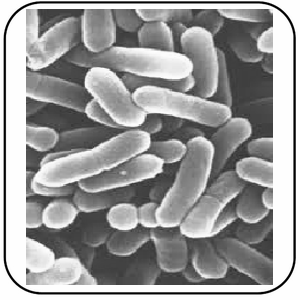Contamination

In the section "Knowledge - Properties - Hygiene" we have described in detail the essential hygienic properties of porcelain. This section is mainly concerned with the sources of danger which the use of porcelain prevents.
Contamination is defined as exceeding the permissible germ counts in drinking water and on objects used for hygienic purposes. The excessive concentration of bacteria and micro-organisms that can develop in the household pipe network is called biofilm, often referred to as "algae formation". The biofilm consists of uniform or different microorganisms and thus offers a good basis for an extreme multiplication of germs. The biofilm constantly releases germs into the environment, which continues to multiply until it reaches its final destination.
Contamination by water & detergent
For germs in drinking water, the current version of the Drinking Water Ordinance of 01.01.2003 specifies a limit value of 100 CFU / ml ( = colony-forming unit per 100 ml). Values exceeding this limit must be treated immediately and continuously monitored (disinfection). Properly thermally or chemically cleaned utility porcelain is absolutely germ-free! The following circumstances are responsible for exceeding this limit value by rinsing the porcelain:
- Non-maintained or inadequately maintained filters in the water pipes (deposit of foreign matter)
- Too low flow velocity due to an oversized line cross section (residues)
- Stagnation sections (sections of the pipeline where the water does not flow)
- Oversized, poorly maintained, incorrectly adjusted water softeners
- Poor water exchange due to low consumption quantities of max. 50ml/min
- Plastic pipes whose plasticizers promote the formation of organic deposits
- Water softening systems that do not meet the DVGW test requirements
- Water softeners contaminated by external influences
- Unhygienic storage and preservation of porcelain
- Precontaminated transport, storage and stacking equipment
Sources of danger in the gastronomic business
Of course, the children used to play in the dirt and now enjoy a sprightly age. Of course you can go to excess with hygiene. Despite the growing number of laws and measures concerning hygiene, the number and type of allergic diseases is increasing every year, and yet we humans are getting older every year. No matter what one's opinion is on the subject of "Immunity & Hygiene", in commercial catering in hotels, restaurants, but especially in canteens, hospitals, children's and old people's homes, we all - the members of the catering chain - bear a great responsibility.
Even the friendly welcome in a restaurant by the owner or waiter is a hygienic disaster! He would have to go to the nearest disinfectant dispenser immediately afterwards to kill the germs and bacteria he has just received. Instead he serves the next main course - without a napkin between plate and hand - and the tour of harmful viruses and bacteria takes its course.
Many hospitals serve prepared food. Especially the warm lunch is the focus of hygienic monitoring. Breakfast and dinner - the cold meals are hardly noticed. Often the meals are left at room temperature for hours before a patient wants or is able to eat them. Only crockery made of glass or porcelain can limit a natural germination by yeast fungi, sausage and cheese.
Never go empty - this is one of the "golden rules" of service. This means carrying something out again and again when carrying it into the kitchen or to the drinks buffet. This means that the cellar acts as a sort of revolving host for bacteria, viruses and germs between guest and kitchen and kitchen and guest. it inevitably comes into contact with dirty dishes and freshly prepared plates. Only porcelain serving dishes can help prevent the spread of microbiological pests.
Or the room service in the hotel - where the room service takes the same elevator as the laundry to transport the dirty bedding and used towels.
We don't want to leave our "darling" unnamed here! Our favorite is the saucer on which the piece of butter is added. Just lying open on the coffee machine, which has been treated extremely neglected in the dishwashing hygiene, it serves as a serving element for a MoPro - (dairy product). Especially at this moment the guest can hope for the spreading resistance of porcelain!
We could go on like this for hours with always the same result. Never and nobody can maintain or guarantee 100% hygiene. And if the regulations were twice as extensive again - there will always be a gap at some point.
Porcelain is a prevention
Unfortunately, we have noticed several times in recent years that companies, the more push business they process and the more unskilled the personnel, like to switch to "more break-resistant" materials such as plastic and melamine harnesses. Although the hygienic sources of danger increase with increasing traffic and handling, many companies act counterproductively.
Only porcelain and glass guarantee an almost "zero contamination" and are far superior to all plastics, bamboo, melamine - but also wood and MDF. Porcelain does not absorb moisture or "collect" in the cupboard. Did you know that stoneware crockery can get moldy in the body itself and through the glaze?
The use of (healthy) porcelain as a food utensil is the greatest possible guarantee of cleanliness and hygiene that a host can provide his guest at the table.
